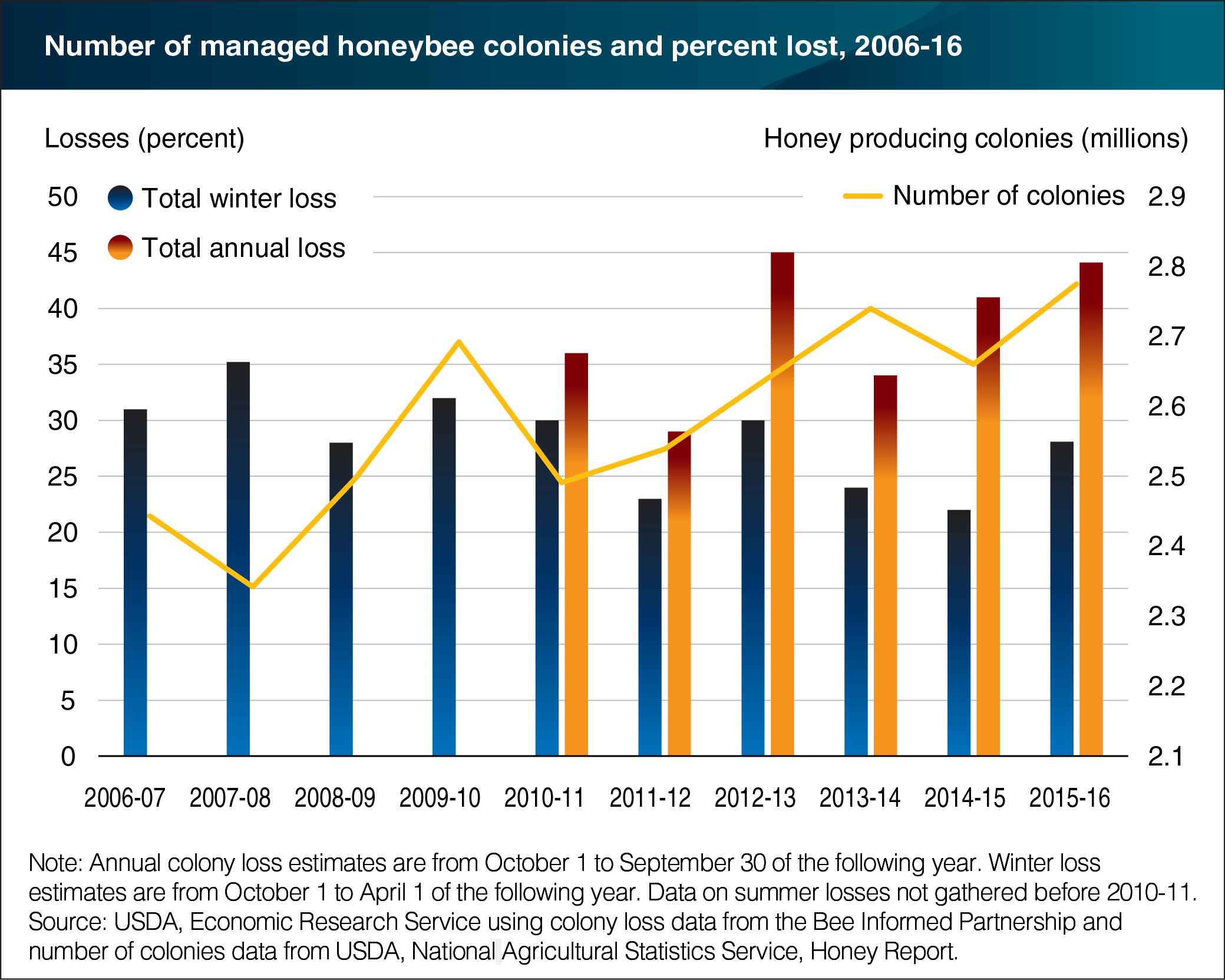Managed honeybee colony numbers increased since 2006 even as colony mortality remained high
- by Claudia Hitaj
- 6/23/2017

About one-third of the world’s food crops depend on pollinators, such as managed honeybees and more than 3,500 species of native bees. These pollinators face a variety of stressors that can impact their health, such as insect pests, pesticide exposure, and habitat changes. Honeybee mortality, as measured by the loss of a honeybee colony, has remained high over the last decade. In 2006-07, approximately 30 percent of honeybee colonies were lost during the over-winter period (October 1 through April 1). The over-winter loss rate has since diminished (22 percent in 2014-15), but over-summer losses have grown. The net result is that about 44 percent of colonies perished in 2015-16, compared with 36 percent in 2010-11. While recent public attention has focused largely on colony mortality trends, overall colony numbers have increased since 2006. This was accomplished with intensified beekeeper management, including splitting colonies, adding new queens, and offering supplemental feeding. This chart is based on the ERS report Land Use, Land Cover, and Pollinator Health: A Review and Trend Analysis, released June 2017.

